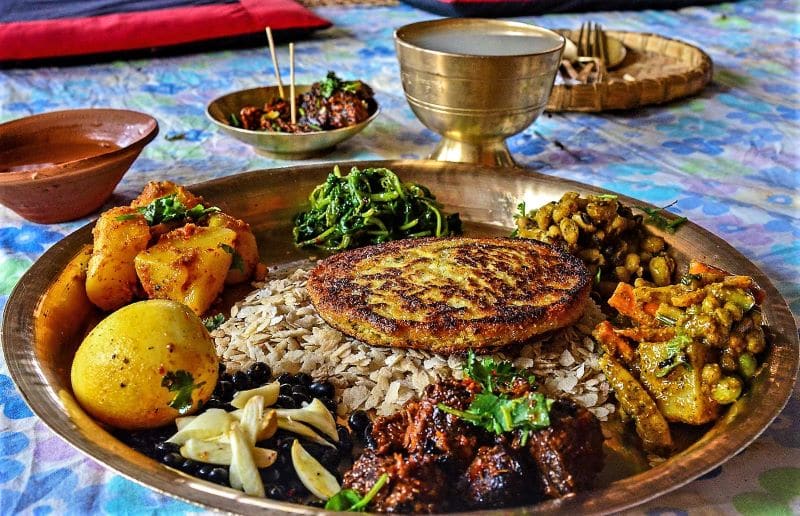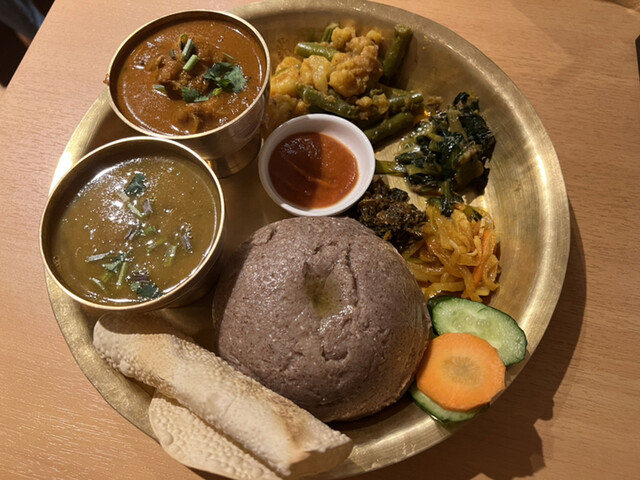Introduction:
Nepal, a land of cultural diversity and breathtaking landscapes, is also a culinary paradise. Its Food Industry In Nepal combines traditional recipes, vibrant flavors, and innovative culinary techniques.
In this article, we delve into the depths of Nepal’s food industry, highlighting its unique dishes, regional specialties, and the factors that have contributed to its growth and popularity. Join us on this gastronomic journey through Nepal’s diverse and delectable food landscape.
A Fusion of Tradition and Innovation:
Nepali cuisine is a harmonious blend of age-old traditions and modern innovations. It reflects the country’s geographical diversity and the cultural influences it has embraced over the centuries.

Each locality offers distinct flavors and culinary traditions, from the Himalayan regions to the plains.
Traditional staples such as dal-bhat-tarkari (lentil soup, rice, and vegetable curry) and momo (dumplings) continue to hold a special place in Nepali hearts, while contemporary dishes with a fusion twist are gaining popularity among the younger generation.
Regional Delicacies and Unique Flavors:
Nepal’s food industry showcases an array of regional delicacies celebrated for their distinct flavors. In the Kathmandu Valley, Newari cuisine reigns supreme, featuring dishes like choila (spiced grilled meat), bara (lentil pancake), and yomari (rice flour dumpling).
Moving towards the mountains, you’ll encounter hearty dishes like gundruk (fermented leafy greens), dhindo (finger millet porridge), and chhurpi (dried yak cheese). In the Terai region, the cuisine highlights dishes such as sel roti (sweet rice bread) and tangy fish curries.

Exploring these regional specialties is a culinary adventure in itself. Nepal’s food industry is a testament to the country’s history of cultural exchanges.
The cuisine has been influenced by neighboring countries like India, China, and Tibet, resulting in unique adaptations of popular dishes.
For example, Nepali-style momos have their different fillings and are often served with a tangy tomato-based sauce. Similarly, the aromatic spices used in Nepali curries add a unique twist to traditional Indian flavors.
These culinary influences and adaptations have played a vital role in shaping Nepal’s vibrant food scene.
Growth and Development of the Food Industry:
Nepal’s food industry has witnessed significant growth and development in recent years. The rise of tourism, increased urbanization, and changing lifestyles have contributed to the proliferation of restaurants, cafes, and street food stalls across the country.
The younger generation’s growing interest in culinary arts has led to the emergence of culinary schools and food festivals, promoting local ingredients and innovative cooking techniques.

Social media and online platforms have also been crucial in showcasing Nepal’s diverse food culture to a global audience.
Opportunities and Challenges:
While Nepal’s food industry continues to flourish, it also faces certain challenges. The lack of standardized food safety regulations poses a risk to consumers and hampers the growth of small-scale food businesses.
However, various organizations and government initiatives are working towards addressing these issues and promoting food safety practices.
Furthermore, there are ample opportunities for entrepreneurs to tap into the growing demand for sustainable and organic food products, farm-to-table concepts, and culinary tourism experiences.
Conclusion:
Nepal’s food industry is a treasure trove of flavors and culinary delights waiting to be explored.
From the traditional recipes passed down through generations to the innovative fusion dishes that tantalize the taste buds, Nepal offers a diverse range of culinary experiences.
As the industry continues to evolve, embracing both traditions and innovation, there is immense potential for growth and recognition on a global scale.
Nepal’s food industry is poised to make its mark internationally by preserving the authenticity of traditional recipes while embracing modern culinary techniques.

